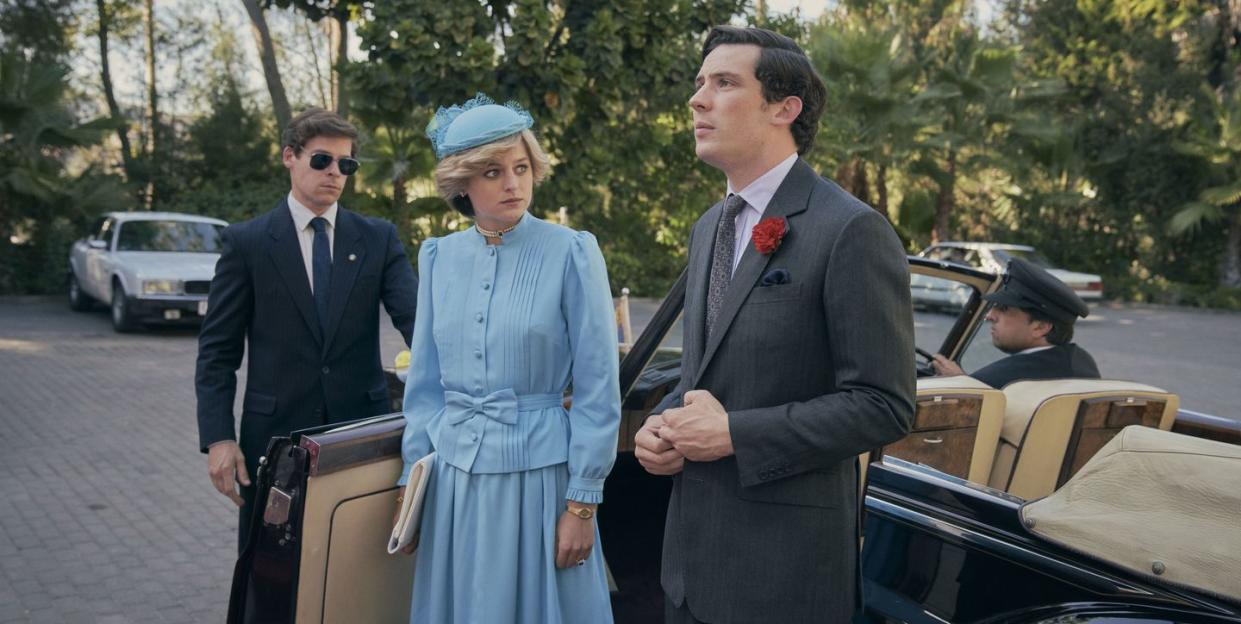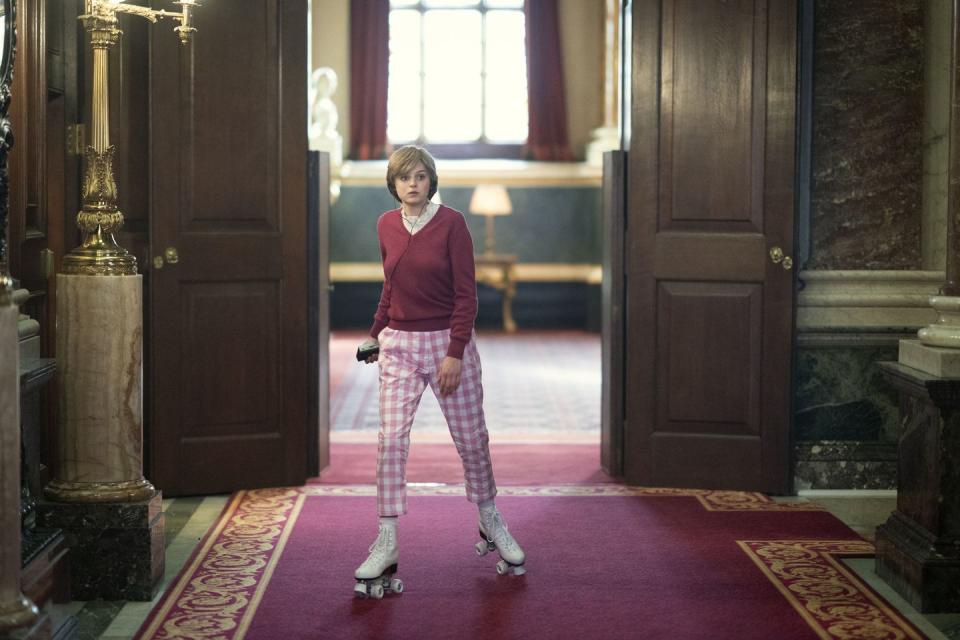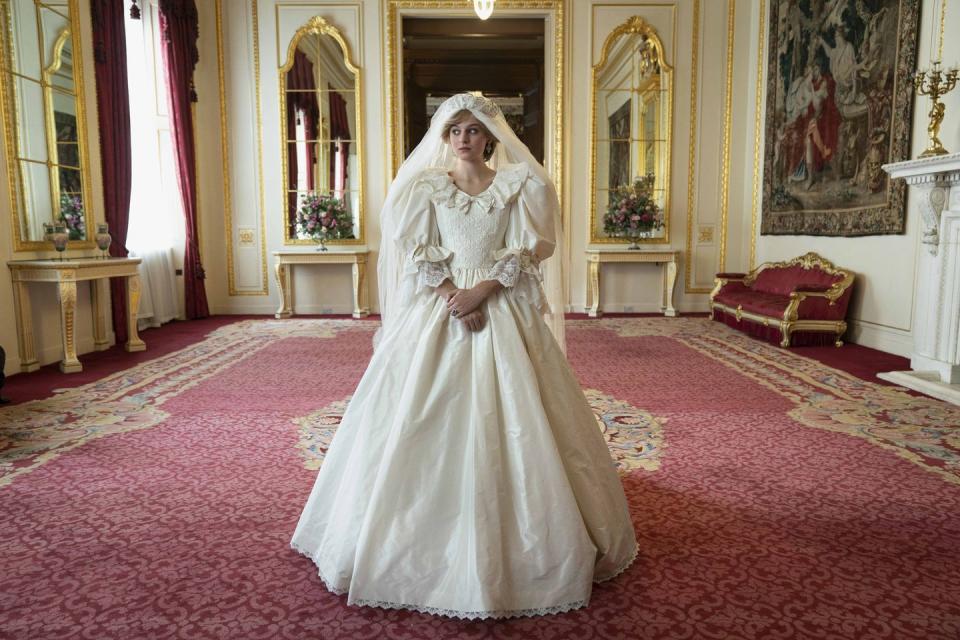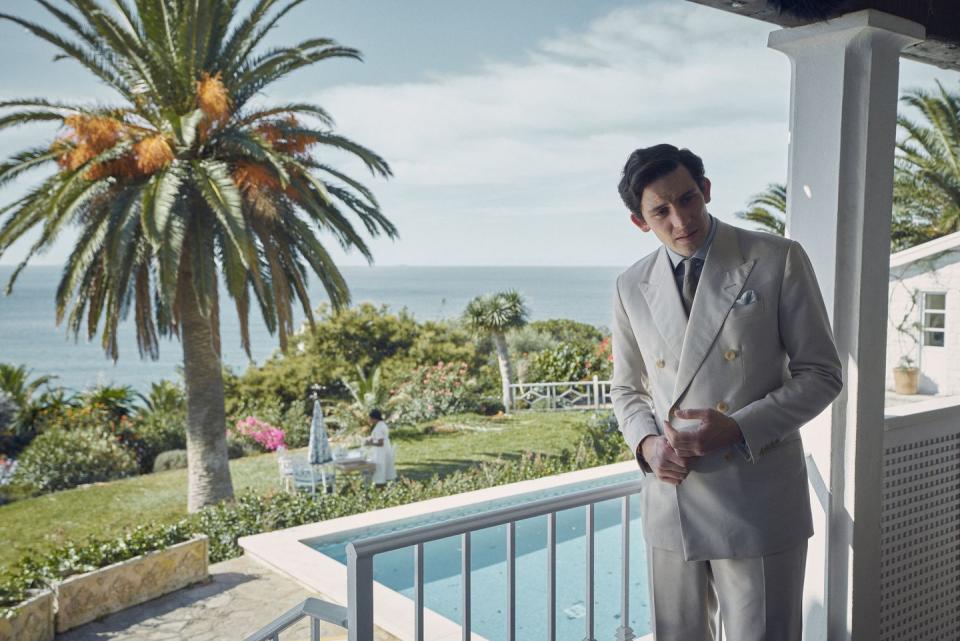Go Behind the Scenes of Princess Diana’s World with The Crown’s Emmy-Winning Production Designer

- Oops!Something went wrong.Please try again later.
- Oops!Something went wrong.Please try again later.
Award-winning production designer Martin Childs is no stranger to period pieces (he received an Academy Award for his work on Shakespeare in Love), but coming on to join a project like Netflix’s The Crown that spans across five decades has been the greatest undertaking of his career so far. From the show’s beginnings in the post-war ‘50s to the upcoming season's debut in the brazen '80s, each season provides new and challenging tasks, and it’s his job to help viewers artfully transition from one iconic decade to the next.
“I have to teach myself to do this very gradually because normally, in my other jobs before The Crown, I’m given a two-hour film that deals with one period where you can illustrate that time in quite a bold way with cars and other big details,” Childs says.
“With The Crown, the story is taking place over half a century, so you have to keep those details quite subtle and tell the story gradually instead of just jolting people into the ‘60s and then the ‘70s. The sets are aided enormously by the pace in which this story is told, so when you have your first glimpse of season four’s new era with an initial introduction to Duran Duran or see Diana on roller skates, it’s a genuinely shocking moment because you’ve never seen that sort of thing before on the show.”
On Creating Princess Diana's World

While every season of The Crown has presented its own challenges—remember the Aberfan disaster in season three?—season four may just bring the most, not only because many people who watch the show vividly remember this golden era of Princess Diana, but, because it was, well, the ‘80s. This season is showing to be one of the most popular yet, with Emma Corrin, the actress who played Princess Diana and Josh O'Connor, the actor who played Prince Charles in season four of The Crown, won Golden Globes for their roles in the series.
“I set myself a big task to make the 1980s photogenic, which is hard to do,” Childs laughs. “You have to invite the period in all its grandeur and embrace it with all its extraordinary color without making a caricature of itself. We did in fact make the 1980s into Diana’s world and then we could have her be a clear fish out of water inside the royal palaces.”
Childs says just as he didn’t seek Austin Powers for his ‘60s-era inspiration, his version of the ‘80s is a far cry from Dynasty. The designer has to be careful to avoid easy clichés and mimic a more gradual change in design trends, as if the show really did happen over 50 years. However, he says there will be some chrome, leather, and black-stained ash in his interpretation of the period that dominated the decade.
Readers may be surprised to discover where Childs found inspiration for creating this type of tension as Diana transitions into this new world. The designer says he loves to rewatch films by his favorite directors every few years, and naturally, one of those favorite directors is Alfred Hitchcock.
While studying the director’s iconic Rebecca, Childs found Diana to be similar to the second Mrs. de Winter, and when Diana moves in, he wanted her to have that same uncomfortable feeling like she was lost in and overwhelmed by this new home as in Hitchock’s film. For this, he says he created some special corners of the Palace that were “less documentary, more dreamlike.”
Building Buckingham

While Childs has the luxury of not having to create a fantasy world from scratch, replicating some of his home country’s most beloved historical landmarks isn’t exactly a breezy walk in the park.
He begins each season by deconstructing its scripts episode by episode. Each episode gets a large sheet of paper that starts with a bubble in the middle to represent Buckingham Palace, then he draws arrows out to represent the script's various journeys and how these journeys are undertaken throughout the season.
This helps him learn how much he needs to distinguish between the various locales featured across the 10 episodes, and with up to 400 sets featured in a season across 90 locations, this has to be an extremely mindful process, all the while displaying unique senses of immense wealth, distinguishing color schemes, and a balance of history and creativity.
“I generally find it not appropriate to exactly reproduce things in history, as history takes many decades to tell a story and we only have minutes," Childs says. "I have to drop a character into a world they are not used to or are comfortable with and exaggerate that world. One of the great benefits for me is that naturally happens so easily with a place as extraordinary as Buckingham Palace.”
In Creator and Writer Peter Morgan’s visually stunning take on the life of Queen Elizabeth II and the British Royal Family, the various locales act as characters in themselves, reflecting the thoughts and feelings of their inhabitants, and Buckingham Palace is arguably one of the most central characters in the series. Childs says when he was first offered the job, he disguised himself as a tourist and took an extensive tour of the grounds before creating a single look for the Palace within four built interiors across four unconnected locations for four separate blocks of filming for four different directors.
This season also posed some unique challenges in the vast variety of sets Childs had to create. He not only had to re-create royal interiors, but he also had to create the world of the infamous Michael Fagan, the man who broke into Queen Elizabeth’s bedroom, which turned out to be one of the greatest royal security breaches of the century.
“With this season, I have a character like Michael Fagan down on his luck, looking for work in a benefits office. I already have that juxtaposition, so I can more easily drop people into foreign worlds than in the other seasons. When I’m thrown a challenge like Aberfan that has nothing to do with the royal world and I have to get out, that's very exciting for me. In a way, it made me able to see all of the other sets in a different way because they are my usual language, and so usually the challenge is making all those look different. Season four gave me a whole new world to help me with that.”
Turning Manchester Into Manhattan and Spain Into Sydney

Season four is most similar to season one when it comes to all the international travel that occurs within 10 episodes. Childs not only had to re-create Diana’s private quarters of Kensington Palace, her childhood home of Althorop, Margaret Thatcher’s residence, and a side of London the show had rarely displayed before, but he was also tasked with sheep stations in the Australian outback, Princess Margaret’s Caribbean getaway, as well as the grit and graffiti of a 1980s Manhattan.
Childs’s team found parts of Manchester to serve as an excellent depiction of a rough-and-tumble New York City, while the South of Spain, particularly Malaga and Almeria, provided ample opportunities to re-create various areas in Australia, Mustique, and even Tony Snowdon’s retreat in Southern California.
“We finished so much on such a small triangle of Spain, it has fantastic variety, and even the cities work for places like Sydney,” Childs says. “Spain is the gift that keeps on giving, and I can’t wait to get there again after all this is over,” he says, referring to the nationwide lockdown he is currently experiencing.
Season four of The Crown is already receiving raving reviews and fans can expect that this may be its best season yet, and we know much of that magic comes from the brilliant mind of Childs and his larger-than-life worlds. We can’t wait to watch this iconic era of modern history come to life upon the season’s debut on November 15.
You Might Also Like

